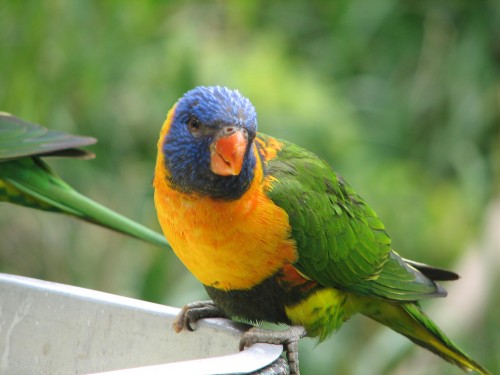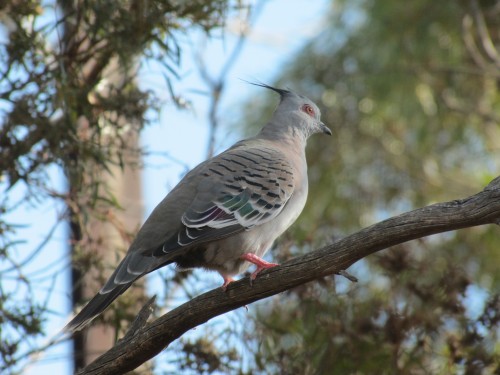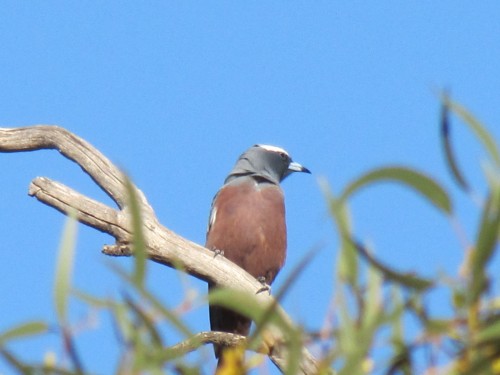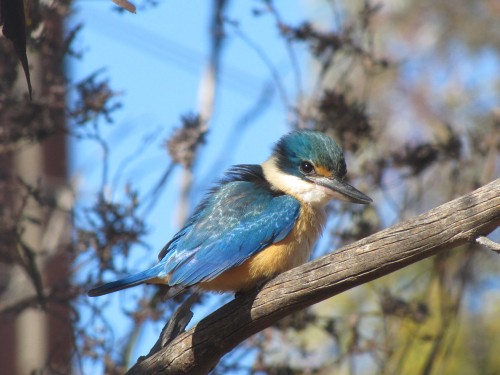Do I need a telescope when I go birding?
Frequently asked questions about birding #14
Do I need a telescope when out birding?
No. But one can be very useful.
I went for 25 years before buying my first telescope for birding. They can be rather expensive; mine was the cheapest available and I find it terribly bulky to carry any distance seeing that it also needs a tripod. It usually only comes out of the car when I don’t have to carry it more than a few metres. I must say, however, that there are two really wonderful uses of a telescope.
- When trying to identify water birds on a lake, river or estuary. Unless you want to get very wet, cold and muddy it is hard to get close to the birds way out on the middle of a lake. It is here that a telescope is essential and the main reason I bought one.
- If you are into bird photography, try digiscoping, that is, digital photography using an attachment that lets your digital camera take photos through the telescope. Alternatively, using an old SLR through a telescope can be very effective. My camera has a 12x zoom which almost replicates the effect without needing either an attachment or a telescope. Again – look at my photo gallery to see the results.
Do I need a camera?
Frequently asked questions about birding #13
Do I need a camera when I go birding?
No.
But I guarantee you will be saying “If only I had a camera” far too many times.
I carry a small camera bag containing a small digital camera when I go birding. They are so small, light and easy to use. I’ve got so many wonderful photos over recent months that it has totally renewed my interest in photography.
A word of warning: always take spare batteries. I had a wonderful opportunity to take a photo of a rare bird once and the batteries died just a few minutes before. I now carry TWO sets of spare batteries! I’m a slow learner.
Update November 2013:
Since writing this article I have taken many thousands of photos, both here in Australia and overseas. I have included the best of them on this site. Browse through the archives for articles which might interest you; most have at least one photo. Below is a selection of just a few.
Why have a bird note book?
Frequently asked questions about birding #12
What do I write in the notebook?
So you have decided to always carry a notebook and pen or pencil while out birding in the field.
What do you write in the notebook?
I usually write the date, the time, the location, the GPS reading, a list of every species seen and an estimate of how many birds present eg 30 pink Galahs, 3 Wood Ducks, 2 Crested Pigeons and a Partridge in a pear tree – oops – a partridge? I’d better take a few notes and do a quick sketch of its main features.
Here is another use for the notebook. I know that there are no partridges in Australia so I take notes. That way I can check in my field guides later when I get home and check my notes against the field guide notes. Oh – that should have been Partridge Pigeon. Of course.
If I had seen a Partridge Pigeon I would have been very excited. They are only found in the extreme northern edge of Australia, a long way from home. Any seen around here in Murray Bridge, South Australia would have to have escaped from someone’s aviary. I’m not sure if this species is kept in aviaries here in South Australia. One would have to have a special permit because this bird in vulnerable in its natural habitat.
This post was updated on 22nd October 2015.
What is a bird note book?
Frequently asked questions about birding #11
What is a bird note book?
This can be any note book you find convenient to carry with in the field. I prefer small 5cm x 3cm spiral bound notebooks that slip easily into my shirt pocket.
Find something that works for you, is cheap, easily written in while birding and meets your needs. You may dispense with a notebook if you are not going to take notes or make a list of species seen, but I would strongly encourage you to add note taking and list making as an extra aspect of your hobby.
Birding when travelling
Frequently Asked Questions About Birding #10:
I’m going overseas. What field guide should I buy?
This can be a daunting task.
I would compromise and not buy a single guide for every country I plan to visit. If your budget stretches that far, fantastic. I’d be worried about the weight in my luggage, however.
Instead, do what I did in early 2006. I went trekking in Nepal for three weeks. I bought the “Field Guide to the Birds of the Indian Subcontinent.†This covered the birds of India, Nepal, Bhutan, and parts of Tibet and other neighbouring countries. It included all the species I was likely to encounter in Nepal, plus a wider area for potential future travels. For example, I would love to visit India, not just for the birds but also for the cultural experiences.
Do your homework:
Don’t forget to buy the field guide at least six months before departure and do your homework, studying the birds you are likely to see. It makes identification in the field so much easier. I studied my field guide on the long flight over.
Related Articles:



